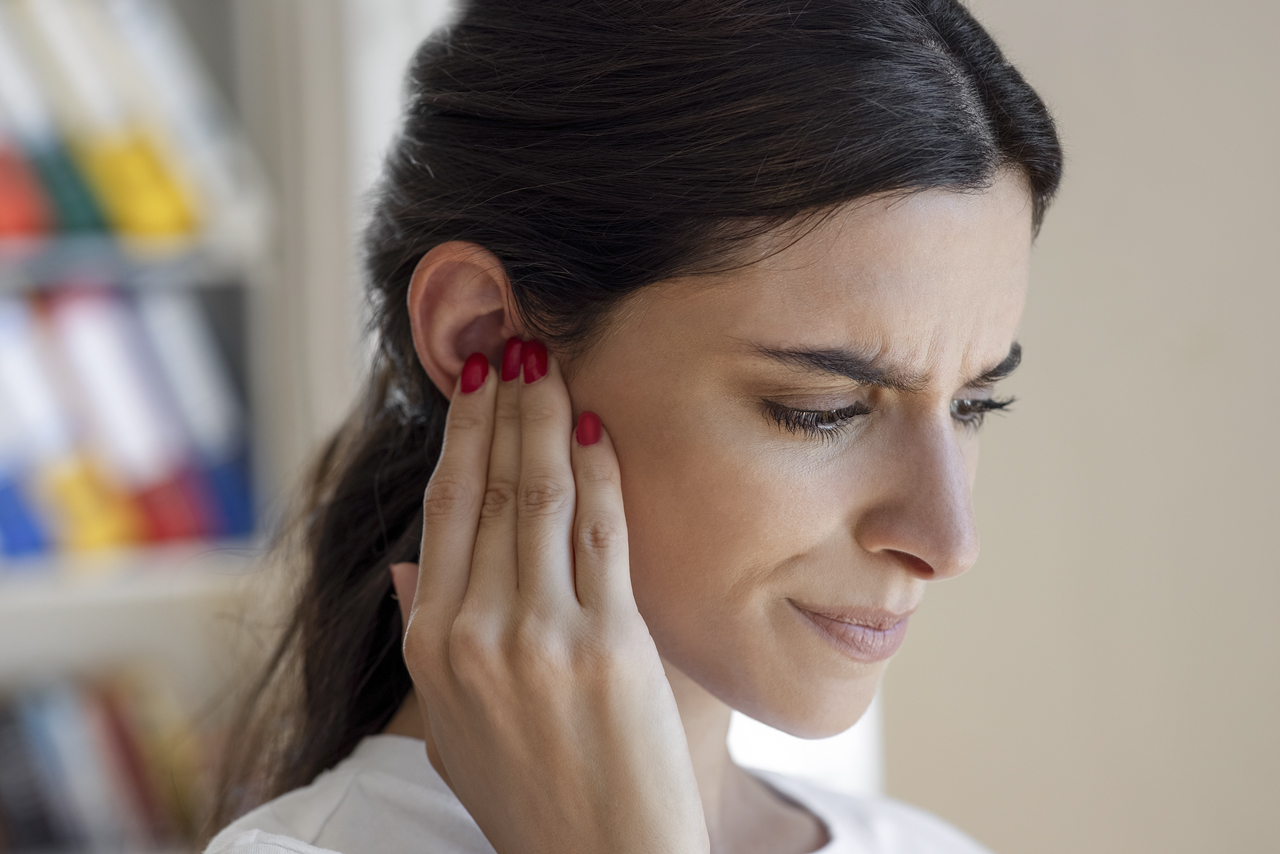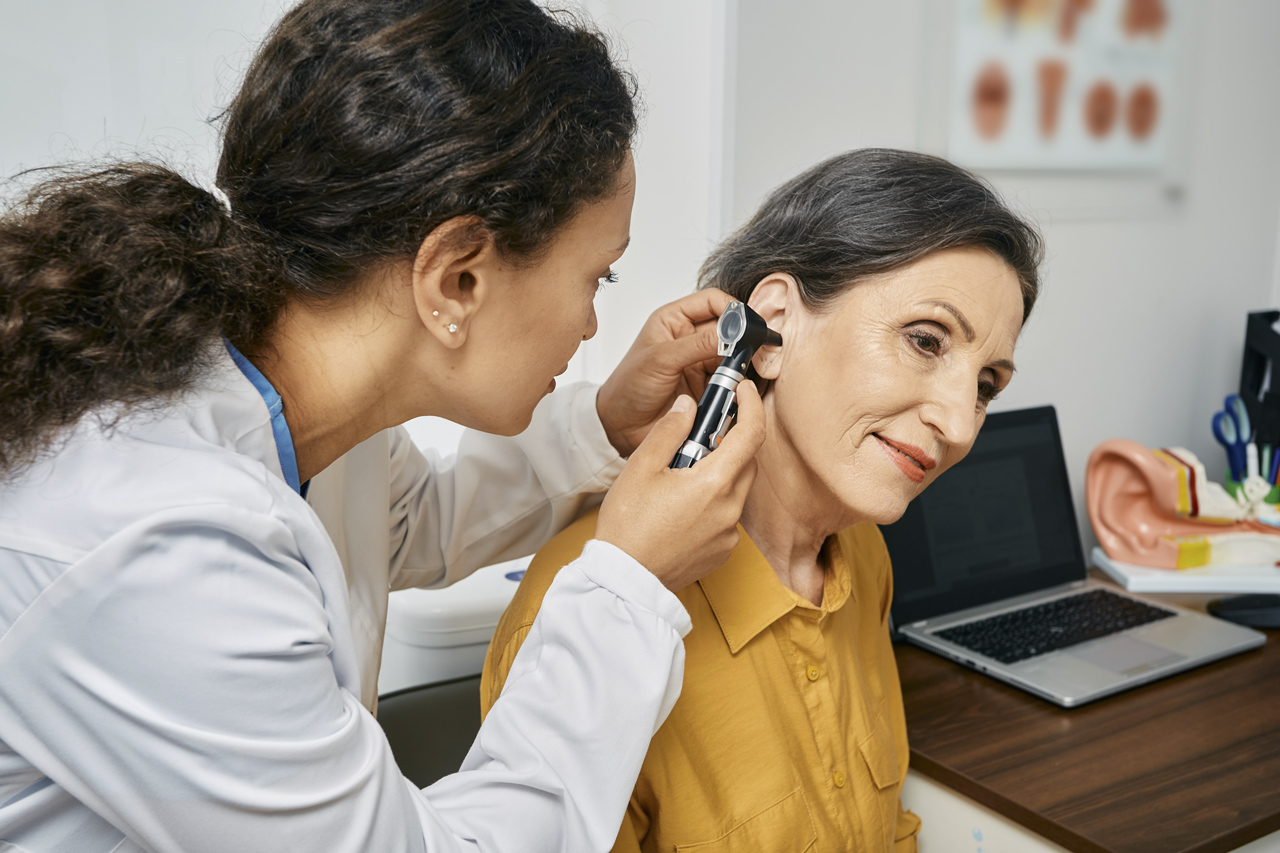Hearing
Hearing Loss
Hearing loss is a partial or total inability to hear. It is used to testify the existence of dysfunction in the mechanism of hearing, thus in the ear. As a result, the cochlea does not encode the received hearing messages correctly, so the signals sent to the brain are corrupted. In simple words, a person suffering from hearing loss can hear, but cannot understand clearly what he is being heard. The severity of a hearing loss is categorized according to the increase in volume above the usual level necessary before the listener can detect it.
Conductive hearing loss occurs when the sound is not conducted efficiently through the outer earcanal to the eardrum and the tiny bones (ossicles) of the middle ear. Conductive hearing loss usually involves a reduction in sound level or the ability to hear faint sounds. Some possible causes of conductive hearing loss is fluid in the middle ear from colds, ear infection (otitis media), allergies (serous otitis media), poor eustachian tube function, perforated eardrum, benign tumors, impacted earwax (cerumen), infection in the ear canal (external otitis), swimmer’s Ear (otitis externa), presence of a foreign body and absence or malformation of the outer ear, ear canal, or middle ear. This type of hearing loss can often be corrected medically or surgically or/and by wearing hearing aids.
Sensorineural hearing loss (SNHL) occurs when there is damage to the inner ear (cochlea), or to the nerve pathways from the inner ear to the brain.SNHL reduces the ability to hear faint sounds. Even when speech is loud enough to hear, it may still be unclear or sound muffled. Some possible causes of SNHL are Illnesses, drugs that are toxic to hearing, hearing loss that runs in the family (genetic or hereditary), aging, head trauma, malformation in the inner ear and exposure to loud noise. Most of the time, SNHL cannot be medically or surgically corrected. This is the most common type of permanent hearing loss. The only solution is wearing hearing aids. Today, many severe cases of SNHL are treated by cochlear implants, with great success!
Sometimes conductive hearing loss occurs in combination with sensorineural hearing loss (SNHL). In other words, there may be damage inthe outer or middle ear and in the inner ear(cochlea) or auditory nerve. When this occurs, hearing loss is referred to as a mixed hearing loss.
Age-related hearing loss, known as presbycusis, is a common cause of hearing impairment in older adults.
Accumulation of earwax can block the ear canal and result in temporary hearing loss.
Prolonged exposure to loud noises, such as loud music, machinery, or construction work, can lead to noise-induced hearing loss.
Some forms of hearing loss can be hereditary, passed down through generations.
Certain infections, such as meningitis, mumps, or otitis media, can cause hearing loss if left untreated.
Head injuries or trauma to the ear can result in hearing loss.
Some medications, including certain antibiotics and chemotherapy drugs, can cause hearing loss as a side effect.
Conditions like otosclerosis, Meniere's disease, and autoimmune disorders can affect hearing.
Structural abnormalities in the ear from birth can lead to hearing loss.
Tumors in the ear or on the auditory nerve can cause hearing loss.
• Individuals with normal hearing can typically hear sounds across the entire range of frequencies.
• The threshold for normal hearing is generally considered to be between -10 dB and 20 dB.
• People with mild hearing loss may have difficulty hearing soft sounds and speech, especially in noisy environments.
• The threshold for mild hearing loss is between 21 dB and 40 dB.
• Those with moderate hearing loss may struggle to hear conversational speech and often require hearing aids.
• The threshold for moderate hearing loss ranges from 41 dB to 55 dB.
• Individuals with moderately severe hearing loss may have significant difficulty following speech without hearing aids.
• The threshold for moderately severe hearing loss falls between 56 dB and 70 dB.
• People with severe hearing loss may only hear very loud sounds and require powerful hearing aids or cochlear implants.
• The threshold for severe hearing loss is between 71 dB and 90 dB.
• Profound hearing loss indicates very little to no hearing ability, even with the use of hearing aids or implants.
• The threshold for profound hearing loss is 91 dB or more.

Tinnitus
Tinnitus is the perception of sound in the ears or head when no external sound is present. It is commonly described as a ringing, buzzing, hissing, or whistling noise. Tinnitus can be intermittent or constant and can vary in loudness. If you are experiencing tinnitus, it's important to consult an audiologist for a proper evaluation and to discuss potential treatment options.
Tinnitus is the hearing of sound in the ears or head, when no external sound is present. While often described as a ringing, it may also sound like a clicking, hiss or roaring. Rarely, unclear voices or music are heard. The sound may be soft or loud, low pitched or high pitched and appear to be coming from one ear or both or even centrally from the head. The most suitable person to consult about Tinnitus is your audiologist.
Very often Tinnitus coexists with hearing loss. In this case, the most effective way to deal with It is by using Hearing Aids. Keep in mind, that Hearing Aids do not cure Tinnitus. The Tinnitus may seem to ‘disappear’ or be reduced because it gets masked by environmental sounds that the user could not hear before. In the case that Hearing Aids are not the solution to your tinnitus, there are other assistive hearing devices that can help with tinnitus.
Tinnitus can be caused by various factors including:
• Hearing Loss: Most commonly associated with tinnitus, especially in older individuals.
• Exposure to Loud Noise: Prolonged exposure to loud noises can cause tinnitus.
• Medical Conditions: Conditions such as Meniere's disease, ear infections, or cardiovascular disease can lead to tinnitus.
• Medications: Certain medications can cause or worsen tinnitus as a side effect.
While there is no cure for tinnitus, there are various strategies to manage it:
• Sound Therapy: Background noise or white noise can help in minimizing the perceived loudness of tinnitus.
• Counseling: Tinnitus can be distressing, so counseling or support groups can help individuals cope with the condition.
• Avoiding Triggers: Limiting exposure to loud noises and managing stress can help in reducing the impact of tinnitus.
Hearing Protection
Protecting one's hearing is crucial, especially in noisy environments or when engaging in activities that expose the ears to loud sounds. Prolonged exposure to loud noises can lead to hearing loss and other ear-related issues. Using appropriate hearing protection can help prevent these problems and preserve one's hearing.
In many workplaces, there are regulations and standards in place regarding the use of hearing protection. It's important to adhere to these regulations to ensure the safety and well-being of employees.
There are various types of hearing protection available to help prevent hearing damage in noisy environments.

Loud sounds can damage the inner ear, causing permanent noise-induced hearing loss (NIHL) and possibly tinnitus (ringing, roaring, or buzzing) which is noise perceived in the ears or in the head. Therefore, hearing protection is highly important to prevent hearing loss damage by noise and to reduce the occurrence of tinnitus.
Sound is measured in decibels (dB). A whisper is about 30 dB, normal conversation is about 60 dB, and a motorcycle engine running is about 95 dB. Noise above 70 dB over a prolonged period of time may start to damage your hearing. Loud noise above 120 dB can cause immediate harm to your ears. The objective when is to achieve an effective residual noise level of between 70 dB and 75 dB for the wearer. If the protection provided is too high (over-protection) this can result in an inability to communicate. Hearing protection will only be effective when used and fitted correctly that is why choosing suitable hearing protection is important.
Hearing protection should be worn in the workplace, such as in construction, factories and when operating or being near agricultural machinery. Apart from the work environment hearing protection is useful during leisure, such as using loud DIY machinery, attending loud concerts, when going hunting etc.